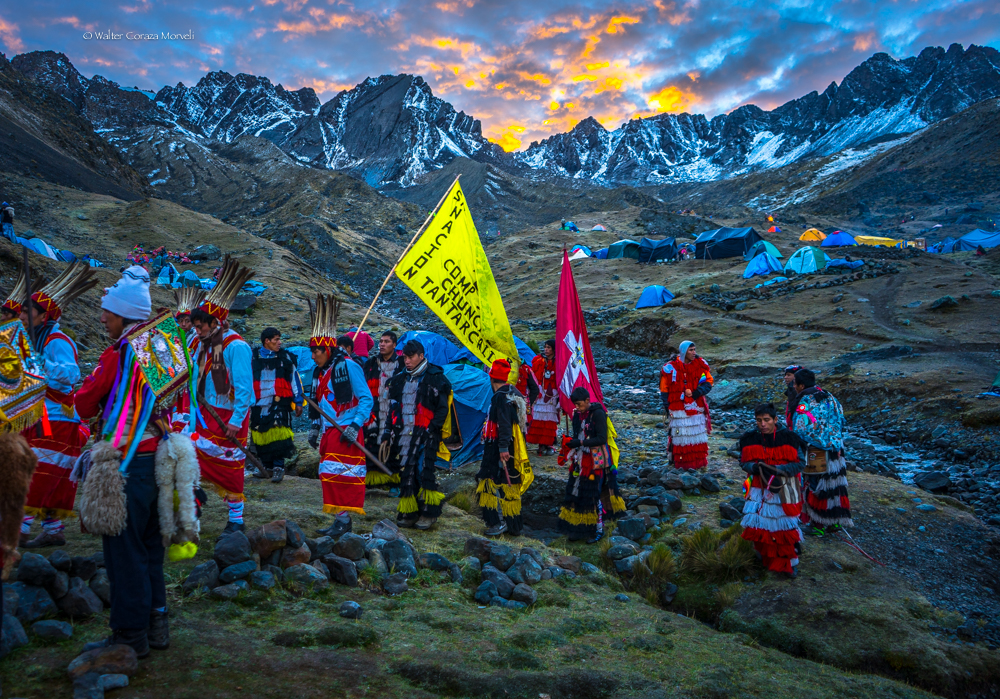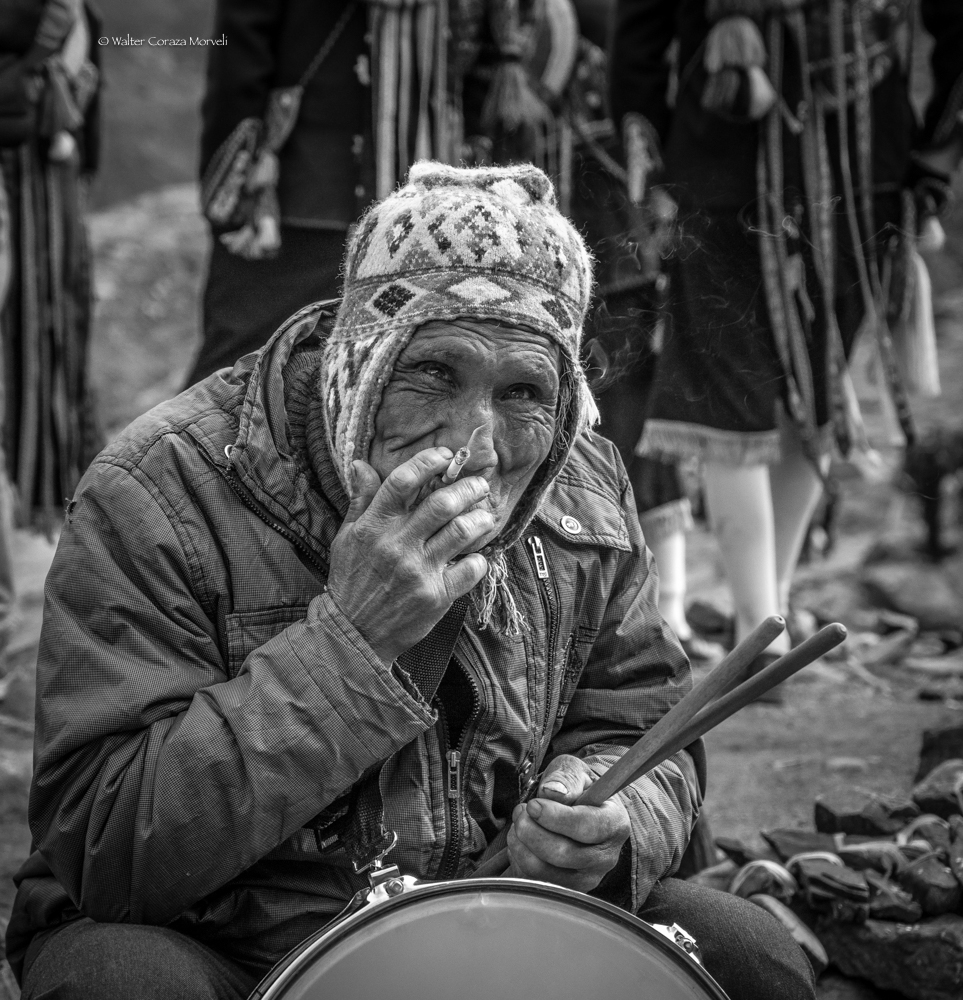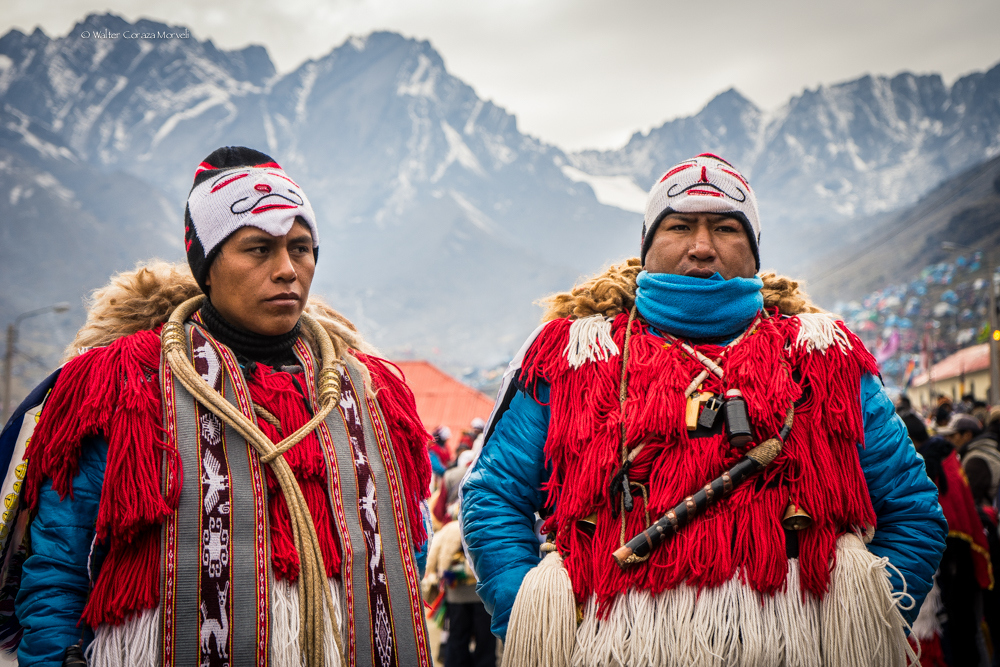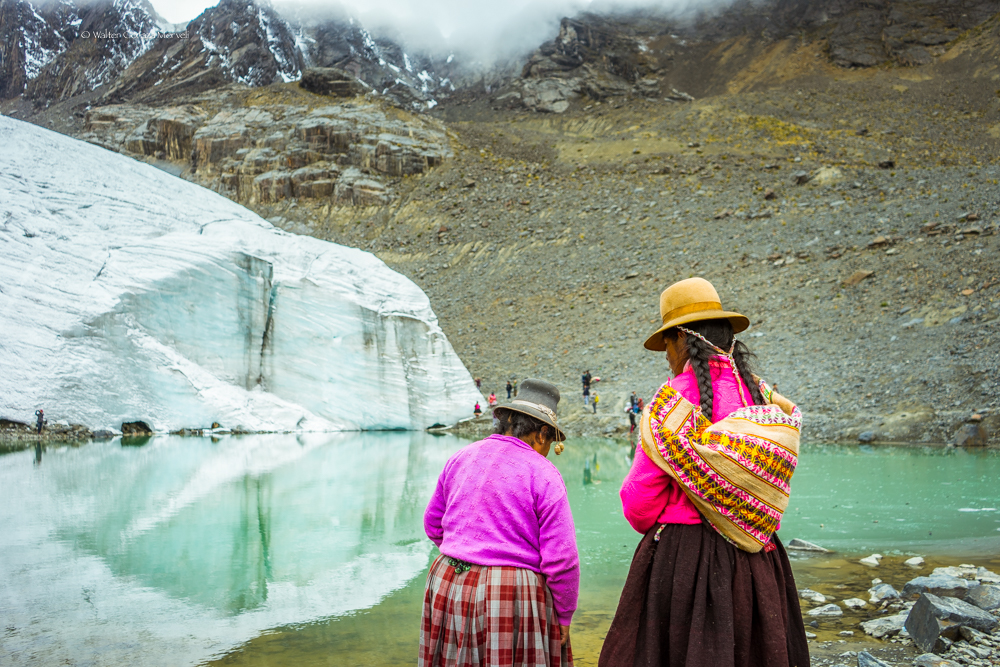The Mystery and the Magic of a Pilgrimage to Qoyllur Rit’i.

Everything began Friday afternoon when my friends, Walter, Adrian, Walter and I got together in Edwin’s house. On his terrace we conversed, drank a few beers, and listened to soft music under a radiant blue sky. The conversation suddenly jumped to the pilgrimage carried out every year to Qoyllur Rit’i (Some to the temple of the Lord of Ccolloriti and others to the glacier and rock). We all wanted to go and so we decided to get ready to leave Saturday night.
Saturday night, five minutes before seven were gathered at the bus stop, coats and sweaters on, with our sleeping bags, and a tent for all of us, two flashlights, and lots of desire to get to know and be part of the greatest pilgrimage of the Andes.
At 7:30 PM we got on the bus. It took us to the town of Mahuallani where we arrived around 11 PM and began our trek upwards to the sanctuary of the Lord of Ccoylloriti in the small town of Sinakara near the imposing, snow-clad mountain Ausangate. A great multitude of people accompanied us and guided us on our way, while in the starry sky the amazing full moon shone and accompanied us while illuminating our passage.

In order to get there, we passed by nine crossed. In each the pilgrims waited, tired. They watched us go by. At the foot of each cross we could see them lighting their candles. They were well covered abrigado we say in Spanish, protecting themselves from the cold, rubbing their hands and each giving warmth to the others.
From the beginning of the pilgrimage, the freezing wind and ice by the river along by the sound of the river and the murmurings of people telling each other stories and adventures all made us feel a lot of energy concentrated in the route. The devotees and dancers of the eight Andean nations make their way with songs and prayers. Along with the pilgrims every moves with the same objective, to have their faith felt and known.

Once we reached the sixth cross, we began seeing provisional tents of plastic where the vendors offered their products: hot drinks, food, images, rosaries, candles, crosses, and more. They also offer all kinds of miniatures. The voices of the vendors come out from their tents saying “build your desires, casero. I have small cars and buildings, property titles certificates of professional study, wads of bills from alasitas in order to attract the goods you desire by playing in the blesses bank of the Lord of Ccoylloriti.

We arrive at the sanctuary of Sinakara at 1 in teh morning. Now everything seemed more illuminated. In front of the temple a multitude of people mixed with the pablitos, or ukukus. We saw them all over maintaining discipline during the liturgical acts. These persons, dressed as bears (black furry costume made from thick cloth and wool, along with a chullu, a traditional cap) keep order and peace among the devotees. They are also called Soldiers of the Lord or intermediaries between the Lord of Qoyllurriti and people.
Already on Sunday morning the cold forced us from the tent very early. Our cell phones had discharged with the freezing cold and we were lost without a clock. We went looking for something warm and went through the town until we were on the other side of the small river, where a small gastronomic fair had appeared. In the majority of their stands the small blackboards offered rice and egg, chicharrón (crisp fried pork), baked chicken (pollo dorado), fired trout, chicken soup, and chairo soup.

We entered a store and inside found fifteen people comfortably accommodated in the small space. The casera, dessed in polleras (wide, pleated skirts, sweaters and her cap, did not have tables or chairs pet still found space for her clients with a happy smile on blocks of earth covered with blankets and shawls. The five of us ordered soup and she served us quickly in deep plastic bowls. Wow, was it good. In each spoonful, we could appreciate the ingredients, the pieces of broken up chuño, papalisa, potatoes, carrots, wheat, and small bits of meat. It all left it feeling satisfied and our stomachs and bodies content and warmed from the cold we had felt.
After breakfast, we gathered with the faithful who awaited the mass, which all looked magical and colorful. To the steps of the Ukukus you could you could hear the sounds of the small bells that hung from their costumes. You were not aware of time. We just lived in the time and the day passed intensely among the moments of sun and cold next to the high mountains and an impressive mass of snow.
Throughout the night and dawn, we heard instrumental music under the full moon which illuminated the sight of the dancers who performed their steps with skill: the contradanza, capac colla, mestiza collacha, and more.
Now on Monday morning, the 8 nations visited the temple before climbing up, one after another, towards the Bank of the Lord of Ccoylloriti. In the door, the pututus and the faith of the people call to the tutelary apus in order to receive their blessing.
The entire pilgrimage is a rite whose external image is that of Christ. But its back ground is the integration of people with nature. This is an ancient religious custom which is only practiced by the people of the Andes. This festivity is a fusion of catholicism with the Andean and all of it is a fiesta of indigenous nations.
The nations are organizations of dance troupes and devotees who come from different parts of the provinces of Cusco.
Monday around 5 pm, we decided to return to Mahuallani in order to catch a bus back to the city of Cusco.









